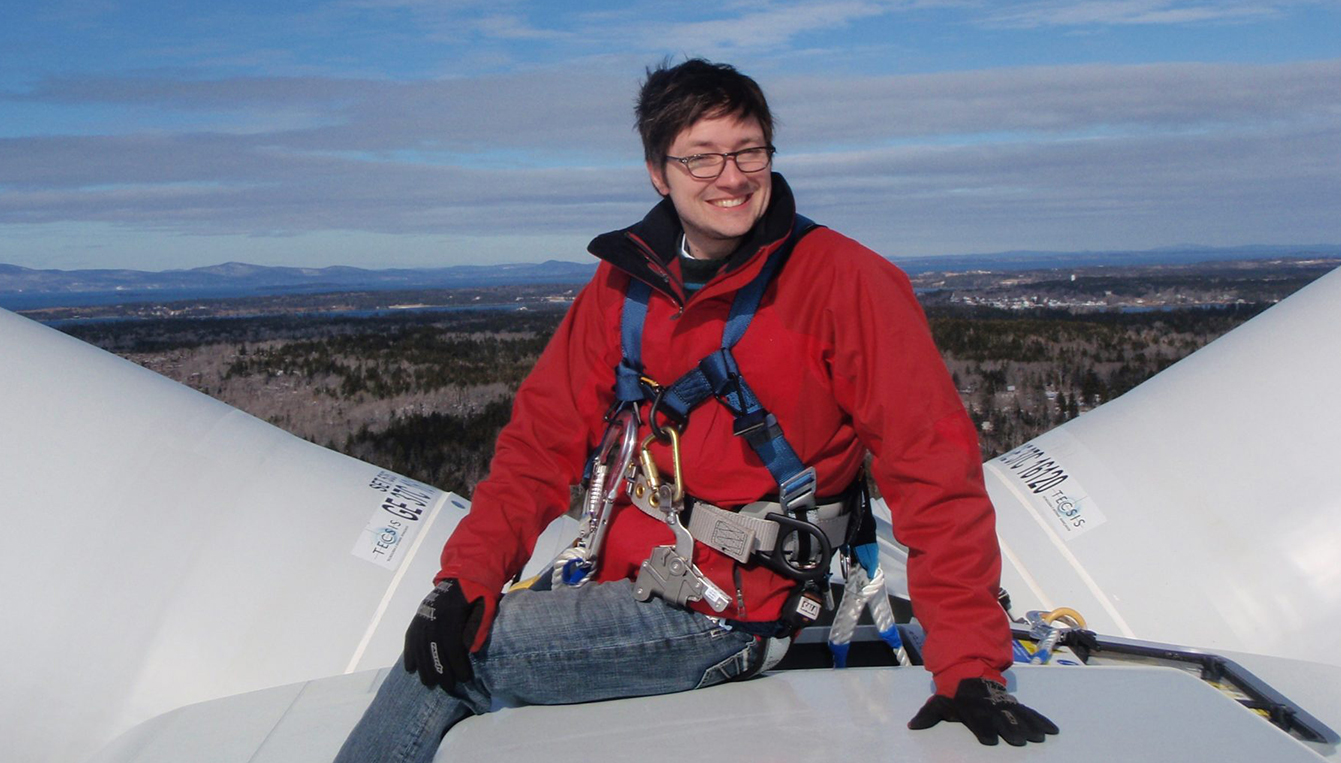Bill Yoder
Remote Monitoring Services Leader
Virginia Office | Co-Leader
Principal

We all continuously consume electrical power in our daily lives and I find the idea of grabbing that power from thin air remarkable, maybe even magical. We can keep grabbing that power too, as if we’re not even using it, it keeps coming! And that is just what we’re doing, as equipment costs decrease we’re seeing wind farms being developed at an increasing rate. But wind energy generation isn’t perfect. Wind turbines are quite large and getting larger as the technology matures. They sometimes create shadow flicker and noise, can disturb wildlife and natural beauty, and sometimes share the common “not in my backyard” sentiment. In the end it makes sense to use this renewable resource where practicable, but with a need to balance the impact it may have on other parts of our lives.
Since Acentech is a multi-disciplinary acoustics firm I’m going focus on noise. While wind turbine generators have become quieter in recent years, they do create sound. They are typically sited away from most homes and other sensitive receiving locations to reduce potential impact. But that’s only part of the story.
Noise is sometimes a contentious issue in the development and operation of wind farms. Developers seeking to site a wind farm should take precautions to meet project noise requirements. Obtaining a permit sometimes requires an extensive sound survey and sound propagation modeling study. Despite these efforts the project may still be met with concern from community members. Once operational, the developer or operator will likely need to demonstrate compliance with noise regulation requirements and may face additional scrutiny as the nearest neighbors experience and begin to live with the wind farm.
Noise regulations can vary by state and municipality and are often quite complicated. As acoustical consultants, we help translate the noise regulations, develop and enact noise testing protocols, perform environmental noise studies, and educate the community. Educating the community and providing a path to voicing concerns can be helpful. To that end, developers are trying hard to work together with the community to educate them about their project’s specifics and allow them opportunity for discussion and buy-in. Noise studies are being shared with the community beyond the standard permitting process, and sometimes demonstrations of expected noise levels are even performed.
Once a project is operational, the developer or operator may perform noise monitoring. Sometimes it may even be the community that requests the windfarm conduct the noise monitoring. A properly configured noise monitoring solution not only aids in demonstrating compliance with regulations, it provides an avenue for addressing concerns a neighbor might have.
While noise monitoring is a good solution to provide feedback to developers, it isn’t feasible to provide public access to this raw data. The problem isn’t one of access, but one of awareness. Determining compliance typically requires a significant amount of manual analysis and an in depth understanding of the regulations. Remember, we’re not measuring only the wind turbine sound, we’re measuring environmental sound which happens to contain turbine sound. So, the complication is knowing what the turbine is doing, how that relates to the turbine sound, and removing any environmental sounds that are contaminating the data.
Lots of research is being done to isolate wind turbine sound so that a fair assessment can be made with respect to regulations in a continuous and automated way. Couple that research with noise monitoring and we’ll have the first step towards addressing developer, regulator, and community concerns for noise at operational wind farms. This approach has proven to be a good way for communities and industries to coexist.
I don’t expect noise concerns to disappear anytime soon, but with enough planning and community involvement we can still make a project successful. So let’s do our best to make everyone happy and keep the magic alive!